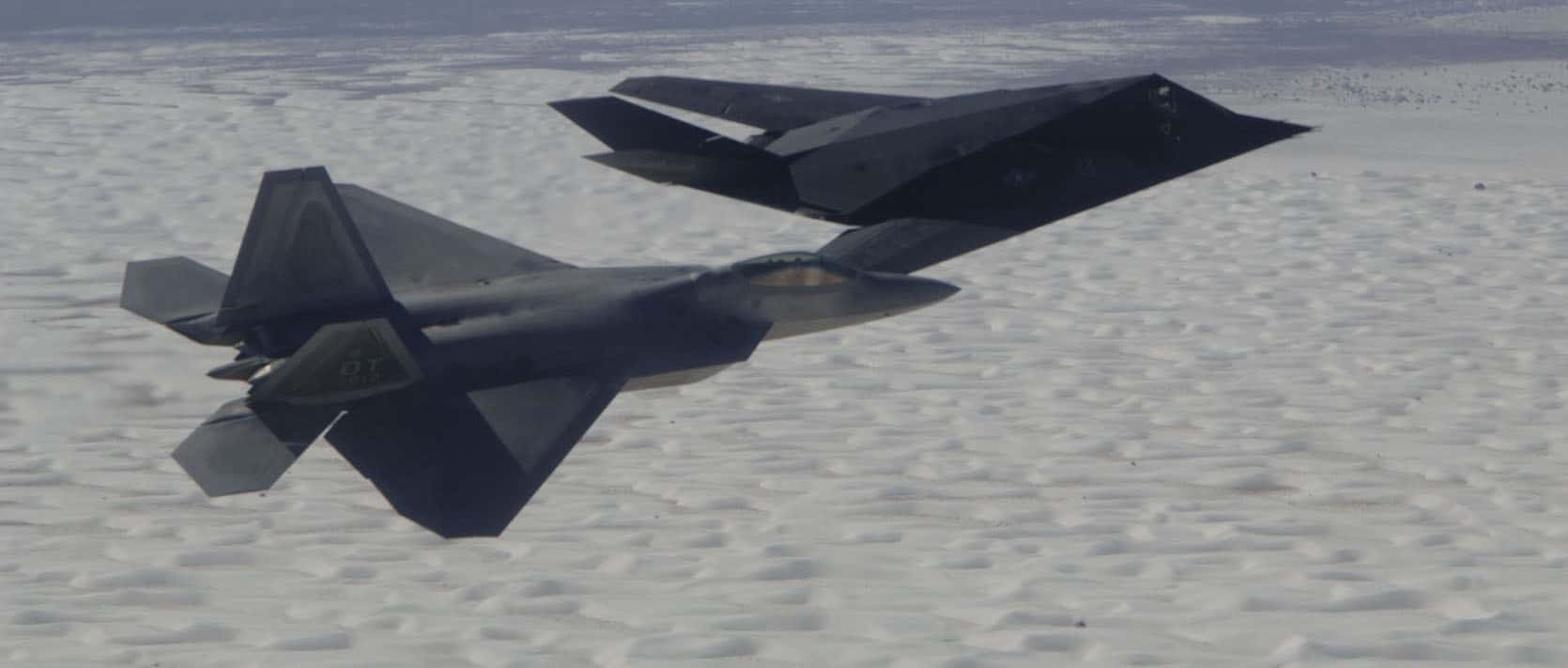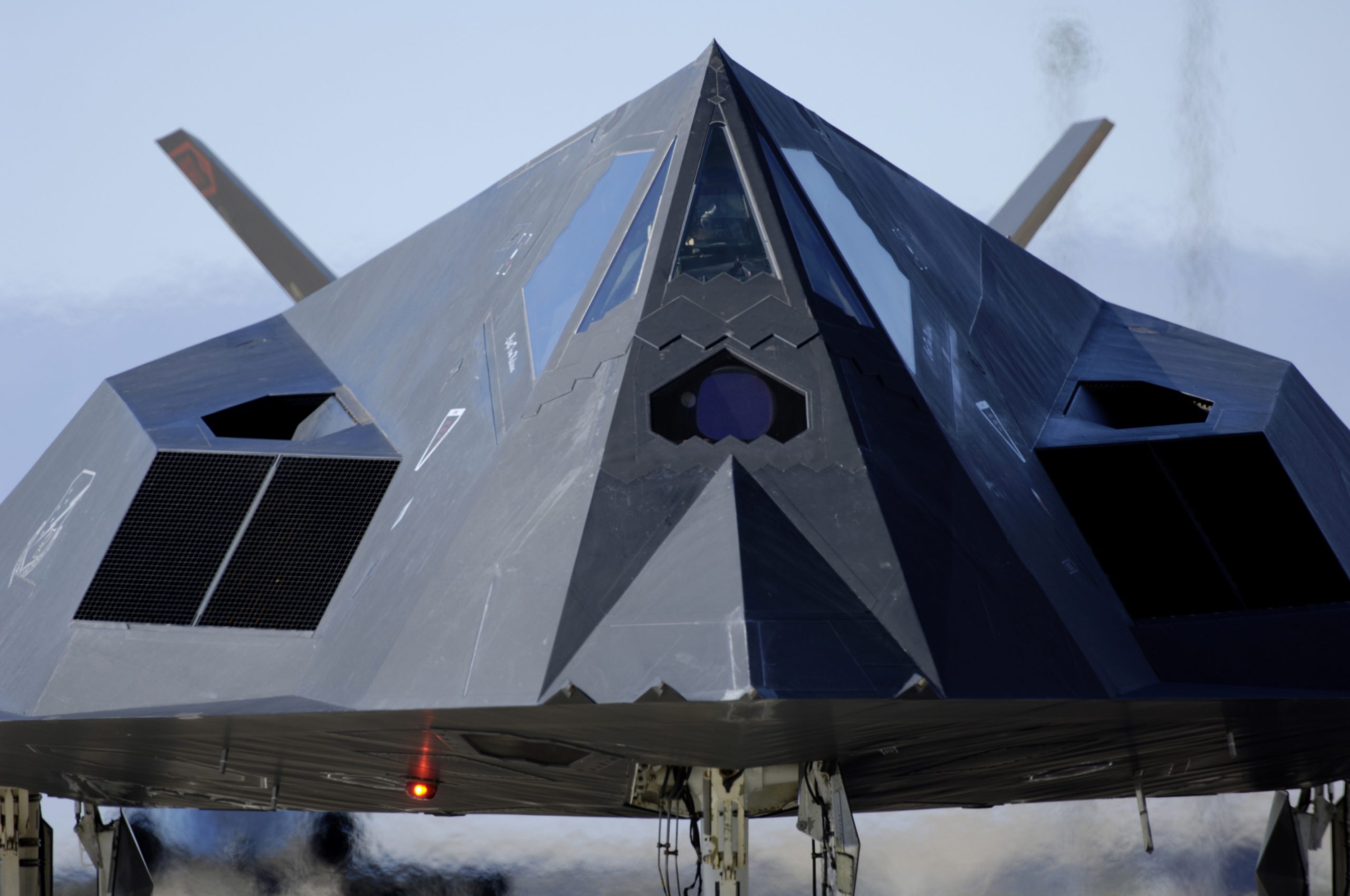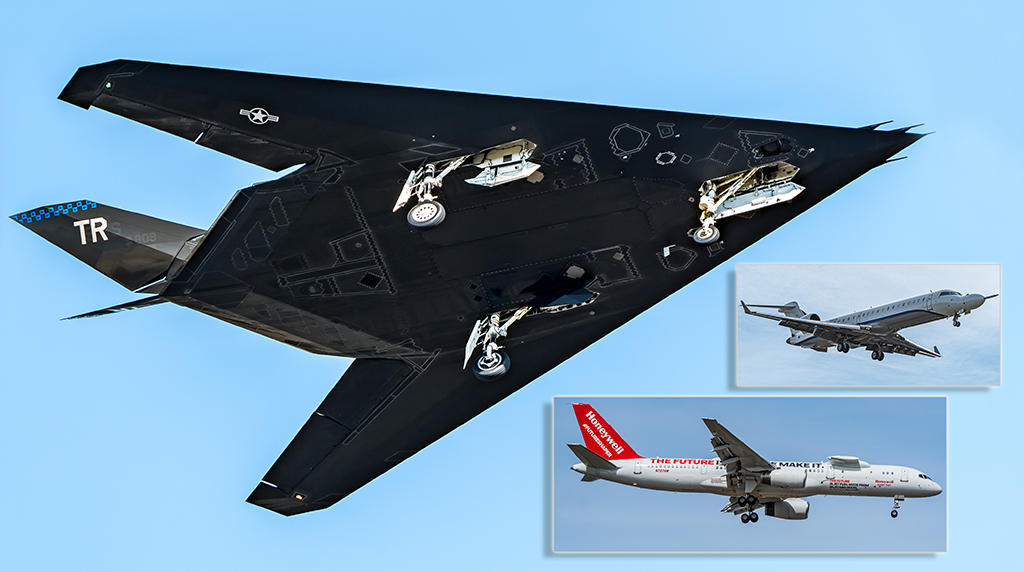greenmartian2017
The Shadow knows what lurks in the hearts of men
- Joined
- 13 May 2008
- Messages
- 173
- Reaction score
- 151
Definitely not the alleged "Artichoke" variant...
I think I have a pretty good memory and have been around internet for a long time, a lot of images I've seen in the early 2000s I have never seen again. If they got scrubbed back then I doubt they'll ever surface again given the time elapsed and I suspect whoever was posting them have since departed us due age/health.
The best picture of this model I could find is on chadslattery.com. Other than that, there doesn't seem to be much information on A/F-117X or F-117N (or whatever) since 2007 or so.
“Yes, his primary role was attack but having said that, it could actually carry every munition in the inventory at the time of its insertion, with the exception of the Sparrow missile, which was radar-guided, so we could carry air-to-air missiles,” Maj. Robert “Robson” Donaldson said of the F-117.
“Our secondary role was to shoot down the Soviet AWACS. So yeah, we were invisible to their radar and we didn’t want them controlling their airspace so, either on the way in or on the way out you could add a Soviet AWACS paint it to the side of your aircraft.”

 www.sandboxx.us
www.sandboxx.us
I thought this was well known alreadyI just discovered that the F-117A had the technical capability to carry air-to-air missiles !
I thought this was well known alreadyI just discovered that the F-117A had the technical capability to carry air-to-air missiles !


There's a lot of dispute about whether Donaldson meant what he said, how literally to take it, and what that translated to operationally, if anything.
Dueling columns in The Aviationist and The War Zone, for example:
Air-to-air combat capability was also initially desired by some members of the user community. As late as May 1983, the system operational concept for the ATA stated that, "As a collateral task, the F-117 can be used as a clear air interceptor against selected, high-value targets such as [Soviet Union] AWACS and airborne jammers."78 This reflects the gap that can exist be- tween the expectations of the user and what is technically feasible. The F- 117A program successfully focused on achieving the essential basic capabil- ity and resisted pressure to add multimission capabilities that were not supported by the available technology. This focus was a key element to the program's success. Later versions of the system operational concept were progressively more realistic in their assessment of the aircraft's capabilities in several areas.79.8
I thought it was something out of that one Steven Seagal movie XDI thought this was well known alreadyI just discovered that the F-117A had the technical capability to carry air-to-air missiles !
Or that episode of 24. As for Executive Decision.I thought it was something out of that one Steven Seagal movie XD
I guess I was mistaken!
Has there been any revelations as to the Navy program that was underdevelopment at the same time as the Lockheed Have Blue in the late 1970's (circ 1976)? General Bobby Bond of the USAF was infuriated that the Navy had a program that he thought was siphoning designs or technology from his stealth fighter program and busted down a door at Lockeed's building 83C to find out what it was.
I assumed that it was AMSS or something else. Obviously it was not AF-117X, but possibly another aircraft program? Ben Rich, in his memoir Skunkworks, recounts the event.
Very likely as Ben Rich describes it as a 'weapons system.' However, I thought that Sea Shadow was designed or developed at Lockheed's Redwood City Facility.

Do you have any pictures of that second F-117B proposal? It sounds similar to the F-117N and I'm wondering if the two are directly connected (beyond both being derivatives of the F-117).Empire said:Does anyone have information or pictures on the F-117 B model? This was the design that was in F-111 class but lost to the F-117 A model because the military thought the A model was a lower risk to take.
There were at least four proposals that carried this designation, that I'm aware of. One was simply a second production run of F-117As, but with LPI radar, GPS and the ability to use HARM.
The second F-117B was proposed to have a larger weapons bay, reduced sweep on the wings and tail and all flying horizontal stabilizers. They were also shooting for a 40% increase in range. The third F-117B envisioned taking the changes proposed for the second version and adding afterburning to the F-117s, an undercarriage more like that of the F-15, an 8,8000 lb. payload and range would be further increased.
The fourth "F-117B" was a model proposed to Great Britain. It was also called the "F-117C", and a host of other names. In this case, the "B" stood for "British". I'm attaching an illustration of that model I got from somewhere I can't remember
I've never heard of this aspect of the program before. Do you happen to have any more information?K was part of F-117 from the beginning
I have seen a claim from an RAF officer involved in this area that 80% of the RAM material used by the USAF at this time was made in the UK.The F-117B was similar to the USAF F-117A but without the faceted canopy. The F-117N had horizontal tails added, non faceted canopy, a beer gut belly for additional weapons and after-burning engines. It's interesting, the UK was part of F-117 from the beginning but never wanted to buy any aircraft, their complaint was that it was first-gen LO tech from info I had garnered, plus the UK had nothing at all nor had they developed anything. The UK's first LO aircraft is the F-35B.
I think that started in 1986.The UK had RAF test pilots involved in the F-117 flight test program from the beginning, but to my knowledge, not involved in Have Blue.
The UK had RAF test pilots involved in the F-117 flight test program from the beginning, but to my knowledge, not involved in Have Blue.
The video linked above is an interview with THE RAF Test Pilot who first flew the F-117 in order to assess & write a report for the MoD. Once submitted he didn't have sufficiently high clearance to read that report (he recalls only 5 people with sufficient clearance, from PM down).I think it's documented in Ben Rich book or the one from Miller.
Spell-checking it must have been difficult then.The video linked above is an interview with THE RAF Test Pilot who first flew the F-117 in order to assess & write a report for the MOD. Once submitted he didn't have sufficiently high clearance to read that report
The USN should have bought some of these, it was a mistake not to do so.Art of F-117N :
View attachment 705935
They wanted something a generation newer in stealth design.The USN should have bought some of these, it was a mistake not to do so.
Of course it's a real project. Just unbuilt.AF-117X Seahawk. I think it's a real project.
View attachment 705959
The USN should have bought some of these, it was a mistake not to do so.
I think the USN could have lived with a lower-level of LO as a trade-off against maintenance and supportability. You can get decent RCS reduction based upon shaping alone, that is also here it starts in the first place, the LO shaping of the aircraft then the other materials are looked at for addressing bandwidth as an example. The F-117N had a full-length keel beam great for transferring loads and for the hook installation. It may have not been perfect but it would have given the USN a capability they did not have, I still think it was a poor decision plus Lockheed was going to give them a good deal as well and lots of support. The 117N could have evolved with block upgrades over time as well.The challenge would have been how to deploy them. You can't really just fly a squadron out to a carrier on short notice when you think you might need it. Which means that you need at least a detachment in every deployed air wing. Even accepting a small sliver-bullet force, that's probably more than 200 aircraft (for one 8-plane det in 13 CVW plus one in each RAG for training, plus ones in long-term maintenance...)
Also, maintaining a first-gen stealth fighter on a carrier would be interesting to say the least. For starters, you're adding yet another aircraft type to the wing, complete with specialized maintenance shops. Maintaining the coatings in a salt water environment sounds like a nightmare. And you can't isolate it from other aircraft, so good luck with the security precautions seen on land even after the F-117 went public.
The Navy was probably right to hold out for something that could live better on the carrier and be bought in sufficient numbers to completely replace the A-6. Pity it took until the F-35 for that to happen.
That’s how F-19 rumors get started!Has there been any revelations as to the Navy program that was underdevelopment at the same time as the Lockheed Have Blue in the late 1970's (circ 1976)? General Bobby Bond of the USAF was infuriated that the Navy had a program that he thought was siphoning designs or technology from his stealth fighter program and busted down a door at Lockeed's building 83C to find out what it was.
I assumed that it was AMSS or something else. Obviously it was not AF-117X, but possibly another aircraft program? Ben Rich, in his memoir Skunkworks, recounts the event.
The problem was that the Navy (and MDD) didn't understand that stealth starts with shaping, they thought it was RAM panels alone.I think the USN could have lived with a lower-level of LO as a trade-off against maintenance and supportability. You can get decent RCS reduction based upon shaping alone, that is also here it starts in the first place, the LO shaping of the aircraft then the other materials are looked at for addressing bandwidth as an example. The F-117N had a full-length keel beam great for transferring loads and for the hook installation. It may have not been perfect but it would have given the USN a capability they did not have, I still think it was a poor decision plus Lockheed was going to give them a good deal as well and lots of support. The 117N could have evolved with block upgrades over time as well.
Case in point, the UK was involved in Senior Trend from the beginning and through the flight test program. When the US offered the UK the 117, they complained it was first gen LO tech so they didn't want the aircraft, they did not have anything and they could not develop there own LO platform during that time period, another poor decision, why go through all the trouble.
Sea Shadow was built in 1984.Did the US Navy even know that Lockheed and Northrop were working on stealth shaping at the time? I certainly don't think so.
